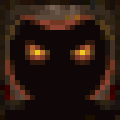Data from Alberta’s Ministry of Children and Family Services shows that 89 per cent of young people who have died while receiving child intervention services this summer were Indigenous.
Advocates and frontline workers are urging the Alberta government to take immediate action to protect at-risk children and implement long-term child welfare reforms.
Between April 1 and Aug. 31, 18 children, youth and young adults died while receiving intervention services in Alberta. Sixteen were Indigenous.
Of those who died, two were not currently in care, eight were in care, and eight were receiving post-intervention support, which can be accessed by young adults over 18 who have previously been involved in child intervention.
Nearly all the deaths are still under investigation and the cause is listed as pending in the report from Children and Family Services. One death is listed as accidental, and two are listed as having died by suicide. The Tyee is supported by readers like you Join us and grow independent media in Canada
“When we see that 16 out of 18 deaths are Indigenous, it’s really clear that systemic problems persist, despite the previous interventions and reforms,” said Audra Foggin, associate professor of social work at Mount Royal University and a Sixties Scoop survivor.
“It’s no longer shocking to me, as an Indigenous person, and nor should anybody in Canada be shocked about this. They should be taking action towards this. And I think everybody has a responsibility as a treaty person in Canada to be thinking about how we can address these devastating impacts through Canada’s history,” she said.
What percentage of the children and youth receiving services at all were Indigenous? (I don’t doubt that there is a problem here—in fact, I think it’s probably worse these numbers suggest at first glance. Indigenous people account for just over 12% of the population of Alberta (2022 census data). Even if they’re a lot more likely to end up in the child welfare system, I doubt that Indigenous youth represent even 50% of that group.)


